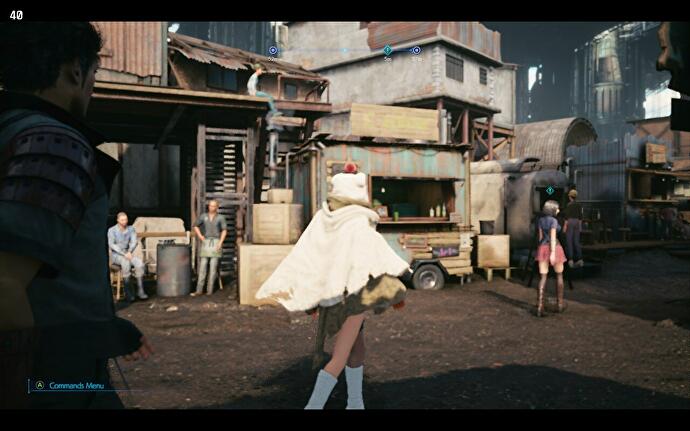Final Fantasy 7 Remake Intergrade on the Steam Deck – Why should I get off the couch again?

You know Final Fantasy 7 Remake. You know everything about the intergrade expansion. And you’ve been following the release of the PC version on the Epic Games Store, where the grand adventure struggled to maintain a 60 frames per second rate even on powerful machines – although the latter has since been fixed. Anyway, on PC I’ve been playing at (broadly) 120 framerate for the last few days while the resolution was 1440p.
For the most part, though, I explored Midgar from the comfort of my couch, mainly because I wanted to know how the newly released Steam version performed on the Steam Deck. And if you can live with small cuts, it does you good! The manageably large screen naturally helps to conceal one or the other weakness.

So it still happens that the game stutters for a tiny fraction of a second. On the one hand, this is no longer as pronounced as in the videos that I saw from the release version of last year. On the other hand, this is less noticeable on the deck’s small display anyway. There it is rather noticeable that the game has to do with maintaining a stable frame rate in general. Technically, the remake of Final Fantasy 7 apparently pushes the Valve handheld to its limits.
That’s why you won’t play with 60 frames per second on the go. Even if you set the resolution to the lowest level of 720p and set both shadows and textures from high to low (there aren’t any other options in the PC versions), the deck only manages 60 in a few situations. It is also a pity that the native resolution of 1280×800 is not supported at all, which is why you have to live with narrow black bars at the top and bottom of the screen.

But what about 30 second frames? Well, Intergrade doesn’t manage that either with full details. In other words, for trouble-free gaming you are dependent on setting the shadows to low in particular. I also lowered the textures accordingly to prevent further small frame rate drops. It has to be said that the quality of the display on the small screen and in view of the already low resolution hardly suffers. Of course, the picture leaves such a very soft impression! This is largely due to the art design chosen by Square Enix, not just the technology.
But the most important thing is: With these “low” settings you can even play Final Fantasy 7 Remake at 40 frames per second. ‘That’s not a big difference,’ do you think? But on the contrary! 40 is currently the perfect compromise and the lowest frame rate from which I find interactive events pleasantly fluid – on such a small screen anyway.

So set the deck accordingly, set the in-game frame rate to at least 60 and enjoy the adventure practically free of interference! Occasionally it still leaves two or three frames here and there and I don’t think the frame time is always constant either. However, this is in no way so disturbing that it distracts from the actual experience. At least I played the remake including Yuffie’s episode for about six hours and was able to enjoy it to the fullest that way.
Incidentally, the battery lasts a little over two hours with these settings, which is very good for a technically modern title. Even though the PC version was released on Steam all in all, along with its mostly already known weaknesses, I can still only recommend the remake itself. It also feels damn good to be able to enjoy the continuation of what Square Enix started 25 years ago on the Steam Deck.
![]()
Reference-www.eurogamer.de